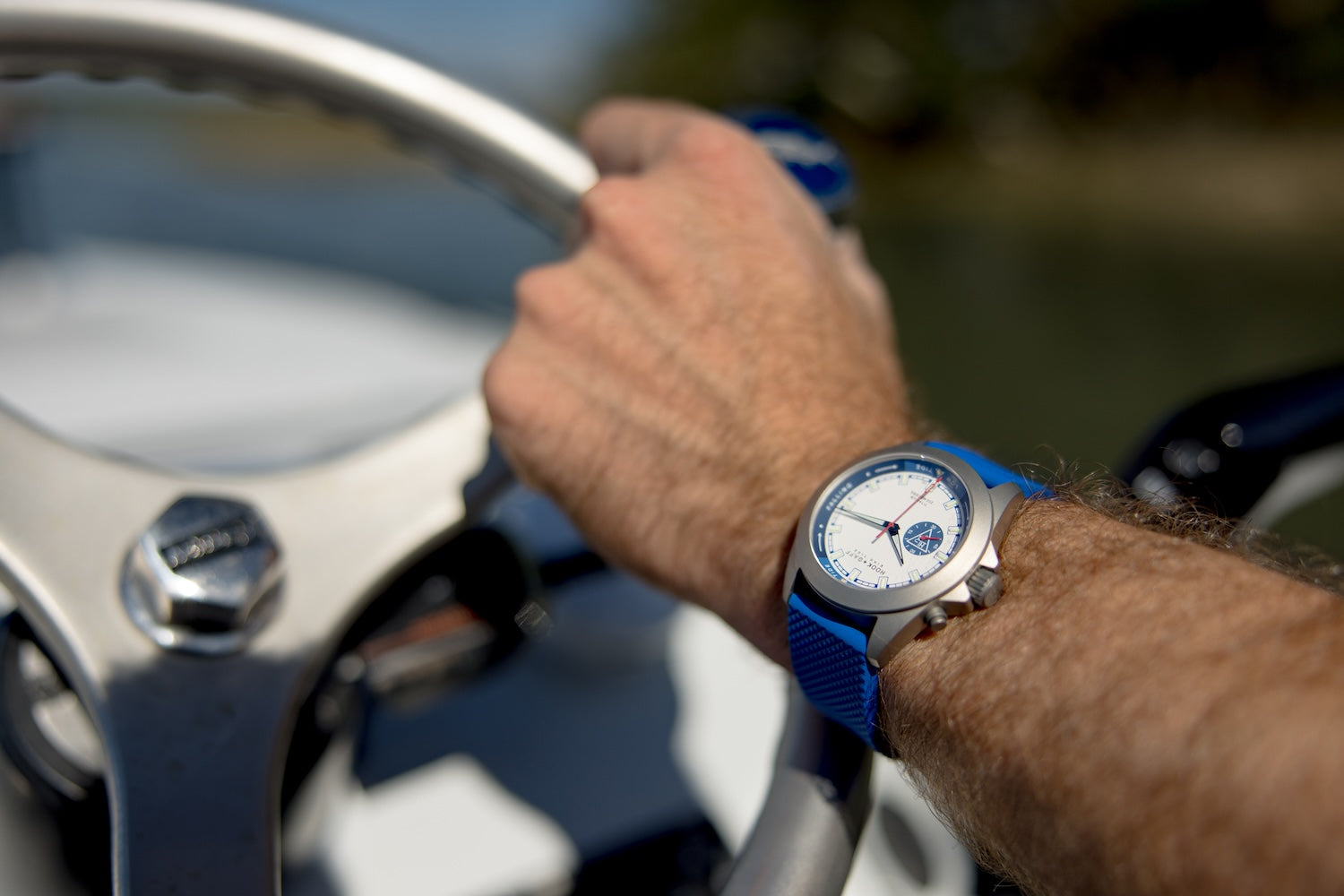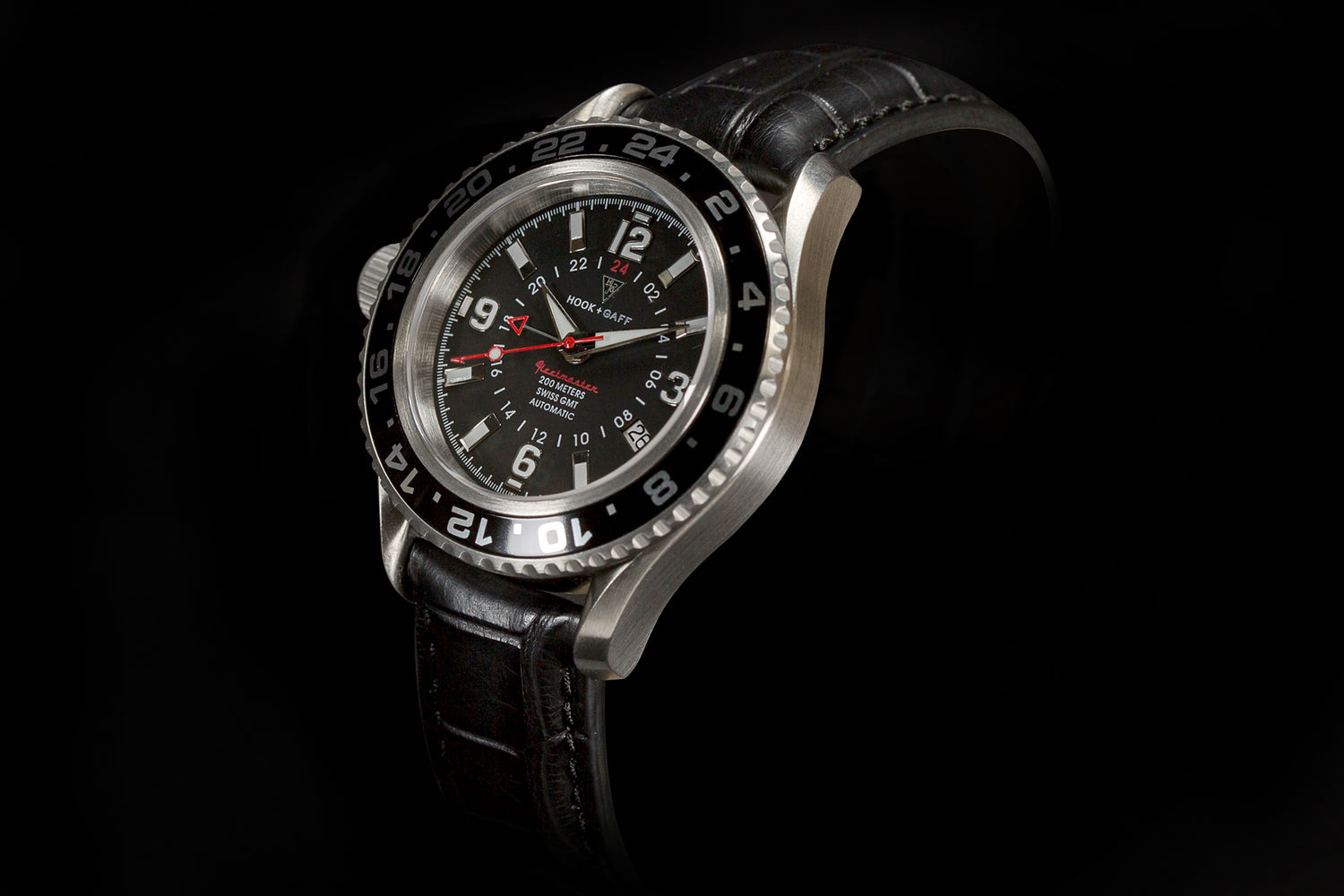Whether you’ve heard the term in school, seen it at an airport or come across it while researching the perfect outdoors watch, GMT has a lot of significance in the watchmaking industry.

What is GMT?
Greenwich Mean Time, known more commonly as GMT, is the mean — or average — solar time according to the Royal Observatory in Greenwich, London. Unlike the time zones we are accustomed to here in the United States, GMT is not affected by Daylight Savings.
Theoretically, when the sun reaches precisely above the Prime Meridian at its highest point of the day, it is noon in Greenwich. However, because of the earth’s elliptical orbit and tilted axis, actual 12 p.m. GMT is rarely this exact moment. More typically, it is a few minutes before or after. But, the discrepancy is solved by the equation of time, and noon GMT is the annual average (or, “mean”) that the event occurs. Are you having high school math class flashbacks yet?
The concept itself dates back to 1884, when an international convention agreed that Greenwich would be the “mean time” against which the rest of the world’s time zones would be compared. However, debuted in an era that saw slow boat travel as the fastest means of transcontinental voyages, GMT wasn’t very relevant. And then came jet airplanes.
Suddenly, people were able to cross multiple time zones in a matter of hours. Pilots flying long routes specifically needed to be able to know the time locally and back home. The iconic airline Pan Am approached Rolex about building a watch to solve for this newfangled need. And in 1954, the GMT-Master was launched as the first timepiece to track two time zones simultaneously.
What is a GMT watch?
The way this concept translates mechanically is relatively simple, but effective in its innovation. GMT functions allow you to set an additional time zone (or two, or three) on your watch. A conventional watch is geared to rotate the hour hand in full once every 12 hours. The GMT watch function is just a second hour hand on the same watch face that’s geared to rotate once every 24 hours — or exactly half as fast as the other hour hand. The second hour hand points to a second time scale that reads to 24 instead of 12, typically located on the innermost portion of the watch dial.

Because all 24 hours of a day are accounted for on a watch with a GMT hand, there’s no room to misinterpret whether the hour is a.m. or p.m. — a handy function for those who travel through the night. And, in the case of international pilots, the 24-hour hand of the watch always points to GMT — a part of communication and navigational protocols that help eliminate confusion.
Why would I want GMT functionality in my watch?
Today, the GMT function on a watch isn’t available exclusively to jetsetters. Hook+ Gaff’s flagship automatic mechanical watch, the Fleetmaster, features adjustable GMT hand for dual-time reading. Its small, red hour hand allows users to set a second time zone by the 24-hour ring that's on the inner portion of the dial. And additionally on this watch, you can set a third time zone using the bezel (the outermost rotating rim of the watch). Plus, the Fleetmaster watch is water-resistant up to 200 meters and features anti-reflective, scratch-resistant sapphire crystal — ready to take on whatever the world throws your way.
Although it gained its fame as a tool for the sky, GMT watches have since earned the reputation as a necessary tool for ultimate adventurer. They are especially useful to sportsmen and women who often find themselves in the air toward a new destination, fishing in tournaments across the world, dealing with international clients, or traveling in a time zone far away from the loved ones you want to call back at home.
The Hook+Gaff Fleetmaster watch starts at $1,995, and comes with the strap option of stainless steel or genuine alligator.




